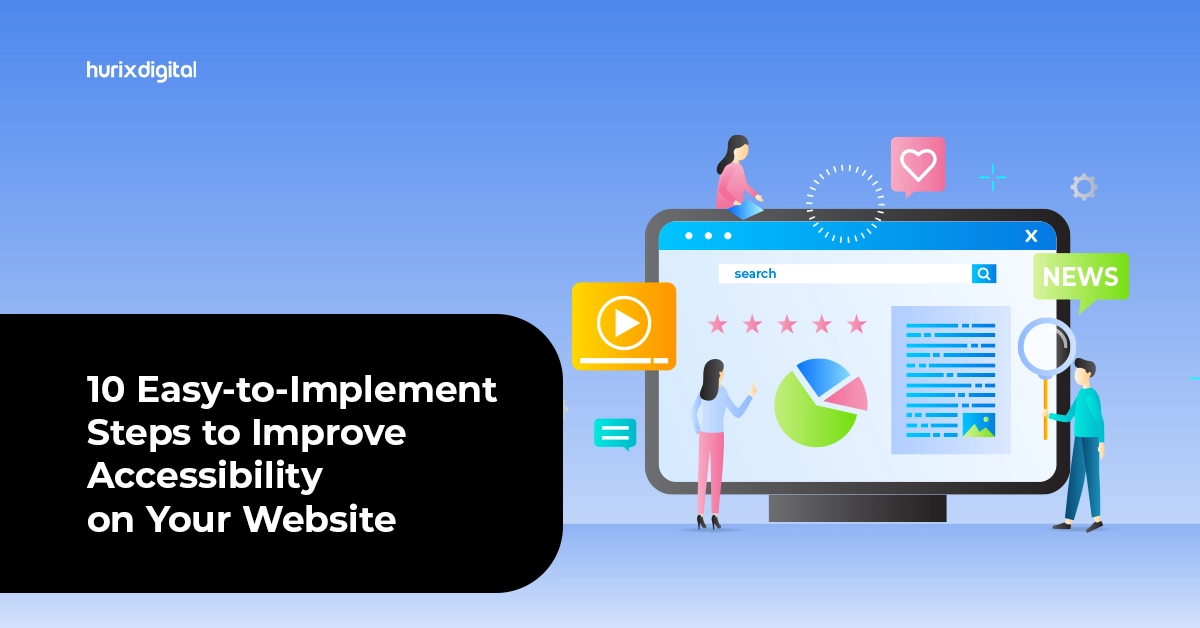
A Beginner’s Guide to UI and UX: What You Need to Know
Summary
This beginner’s guide introduces the basics of user interface (UI) and user experience (UX) design, offering insights into best practices and the impact on product success.
This article is a comprehensive guide on what does UI & UX mean, and discusses other relevant topics related to the UI UX field –
Table of Contents:
- What is UI?
- What is UX?
- Are UI & UX Are Same?
- What Are The Principles of User Interface?
- What Are The Principles of User Experience?
- Who Will Get Benefited by UX & UI?
- What is The Difference Between UI & UX?
What is UI?
UI stands for “User Interface” It refers to how a user interacts with a software application or a digital device. The user interface can include various elements such as buttons, menus, text boxes, and graphical representations that allow the user to control and interact with the software or device.
A good user interface is designed to be intuitive, easy to navigate, and efficient. It should help the user accomplish their goals quickly and without confusion. UI design is an important aspect of software and digital device development as it directly affects the user experience and can impact the adoption and success of the product.
What is UX?
UX stands for “User Experience” It refers to the overall experience that a user has with a product, such as a software application, website, or digital device. UX design involves understanding the needs, goals, and behaviors of users, and then designing a product that meets those needs in a way that is easy and enjoyable to use.
UX design involves several different disciplines, including user research, interaction design, information architecture, usability testing, and visual design. The goal of UX design is to create a product that is both useful and delightful to use, and that meets the needs and expectations of its users.
A good user experience is essential for the success of a product, as it can directly impact factors such as user adoption, customer satisfaction, and engagement. UX design is an iterative process that involves continuous testing and refinement to create a product that meets the needs of its users and provides a positive overall experience.
Are UI & UX are same?
UI (User Interface) and UX (User Experience) are not the same, but they are closely related concepts. UI refers to the visual design and interactive elements of a product, while UX refers to the overall experience a user has with the product. While these two concepts are closely related and often work together, they are not the same thing.
UI refers to the visual design and interactive elements of a software application or digital device that enable users to interact with it. This includes everything from the layout of the user interface to the typography, color scheme, icons, buttons, and other visual elements. The goal of UI design is to make the user interface easy to use, visually appealing, and intuitive.
UX, on the other hand, is a broader term that encompasses the entire experience a user has with a product, including their emotional response to it. This includes how easy it is to learn and use the product, how enjoyable it is to use, and how well it meets the user’s needs and expectations. UX design considers factors such as user research, user testing, and the overall user journey to create a product that is both useful and enjoyable to use.
What are the principles of User Interface?
The principles of UI design are a set of guidelines that designers follow to create user interfaces that are visually appealing, easy to use, and effective at achieving their intended goals. Here are some of the key principles of UI design:
- Keep it simple: A simple and intuitive user interface is easier for users to understand and navigate. Avoid cluttered designs and unnecessary elements that can distract users from their goals.
- Be consistent: Consistency in design, layout, and typography helps to create a predictable user experience, which makes it easier for users to learn and use the interface.
- Use clear and concise language: Use language that is easy to understand and avoid technical jargon. Use clear labels and instructions to guide users through the interface.
- Provide feedback: Feedback helps users to understand the consequences of their actions and provides a sense of control over the interface. Provide visual feedback such as animations or sound effects when users interact with elements on the screen.
- Use visual hierarchy: Use visual elements such as color, size, and contrast to create a clear visual hierarchy that guides users through the interface and highlights important elements.
- Provide easy navigation: Provide clear and easy-to-use navigation that allows users to move through the interface quickly and efficiently.
- Design for accessibility: Ensure that the user interface is accessible to all users, including those with disabilities. Use design techniques such as contrast, font size, and screen reader compatibility to make the interface accessible to everyone.
These principles are not exhaustive, but they provide a useful framework for designers to create effective user interfaces that meet the needs of their users.
What are the principles of User Experience?
Here are some general guidelines for UX design:
- Conduct User Research: Before designing a product, it’s essential to understand the users who will be using it. Conduct user research to gain insights into their needs, goals, and behaviors.
- Create Personas: Personas are fictional representations of the target users. Create personas to better understand their motivations, goals, and pain points.
- Map Out the User Journey: Map out the user journey to understand the flow of the user’s experience with the product, from start to finish. This helps to identify pain points and opportunities for improvement.
- Design for Mobile Devices: With the rise of mobile devices, it’s essential to design for smaller screens and different user behaviors.
- Use Prototyping: Use prototyping to quickly iterate design ideas and test them with users.
- Use White Space: White space is essential for creating a clean and uncluttered design. Use white space to highlight important elements and create a more balanced layout.
- Use Clear and Simple Language: Use clear and simple language in the product to make it easier for users to understand and use.
- Consider Accessibility: Design the product to be accessible to everyone, including users with disabilities. Consider factors such as contrast, font size, and screen reader compatibility.
- Test and Iterate: UX design are an iterative process. Test the product with users and use their feedback to improve the design.
These are just a few general guidelines for UX design. The specifics will vary depending on the product, the users, and the design goals.
Who will get benefited by UX & UI?
Both UX (User Experience) and UI (User Interface) design are focused on creating products that are easy to use, efficient, and enjoyable for users. Therefore, anyone who uses a product can benefit from good UX and UI design.
For example, if you’re using a mobile app to order food, good UX and UI design can make it easier to find the restaurant you want, navigate through the menu, and complete your order. If you’re using a website to shop for clothes, good UX and UI design can help you find the right size, color, and style, and complete your purchase quickly and efficiently.
Businesses that invest in UX and UI design can benefit from increased user satisfaction, better conversion rates, and increased customer loyalty. A product with good UX and UI design can also help businesses to stand out from their competitors and differentiate their brand.
Ultimately, anyone who uses a product can benefit from good UX and UI design, whether it’s a website, mobile app, software application, or any other type of digital product.
What is the difference between UI & UX?
UI (User Interface) and UX (User Experience) are related but distinct fields in the design of digital products. Here are some of the key differences between UI and UX:
- Focus: UI design is focused on the visual and interactive aspects of a product, including its layout, color scheme, typography, and the placement of buttons and other interface elements. UX design is focused on the overall experience of the user, including the product’s usability, accessibility, and emotional impact.
- Scope: UI design is a subset of UX design. While UI design is concerned with the look and feel of the product, UX design encompasses a broader range of factors, including user research, information architecture, and user testing.
- Skill set: UI designers need to have skills in visual design, graphic design, and front-end development. UX designers need to have skills in user research, information architecture, and interaction design.
- Tools: UI designers use tools such as Adobe Photoshop, Sketch, and Figma to create visual designs and interfaces. UX designers use tools such as user testing software, wireframing software, and prototyping tools to design and test user experiences.
- Output: The output of UI design is a set of visual designs and interface elements that are used to build the product. The output of UX design is a set of guidelines and best practices for creating a user-centered product.
UI and UX are related but distinct fields in the design of digital products. While UI design is focused on the visual and interactive aspects of the product, UX design is focused on the overall experience of the user. Both fields are essential for creating products that are easy to use, efficient, and enjoyable for users.
| PRO’S AND CON’S OF USER INTERFACE | |
| Pro’s | Con’s |
| Aesthetically pleasing design can attract and retain users. | Focusing too much on aesthetics can sometimes compromise usability. |
| Clear and intuitive interface can make it easier for users to navigate and accomplish tasks. | Overuse of animation and effects can slow down the user experience. |
| Consistent design elements can increase user trust in the product. | Design trends can quickly become outdated, requiring constant updates. |
| Attention to detail can create a more polished and professional look and feel. | Design that is not consistent with the brand can be confusing for users. |
| User-centric design can create a more engaging and enjoyable experience. | A lack of user research and testing can result in a design that doesn’t meet user needs. |
| PRO’S AND CON’S OF USER EXPERIENCE | |
| Pro’s | Con’s |
| User-centric design can create a more satisfying experience for users. | Can be time-consuming and expensive to conduct thorough user research and testing. |
| A focus on usability and accessibility can make the product more inclusive. | Design decisions may be based on subjective opinions rather than data. |
| User testing can identify and fix issues before the product is launched. | Changes to the product based on user feedback may be difficult to implement. |
| Understanding user needs can result in a more efficient and streamlined product. | The user experience can be affected by factors outside of the designer’s control, such as network speed and device performance. |
| Attention to detail can create a more polished and professional product. | Too much focus on user needs can sometimes neglect business needs and goals. |
In summary, both UI and UX design have potential pros and cons, and the specific benefits and drawbacks will depend on the product, the users, and the design goals.
Related Article – Need for better UI/UX and Website Speed Optimization
To know more, write us at marketing@hurix.com

Associate Vice President – User Experience Design at Hurix Digital (EMEA), with 10+ years in UX and design leadership. She champions AI‑driven, inclusive, and strategy‑led UX across banking, fintech, EdTech, MedTech, and e‑commerce sectors.








